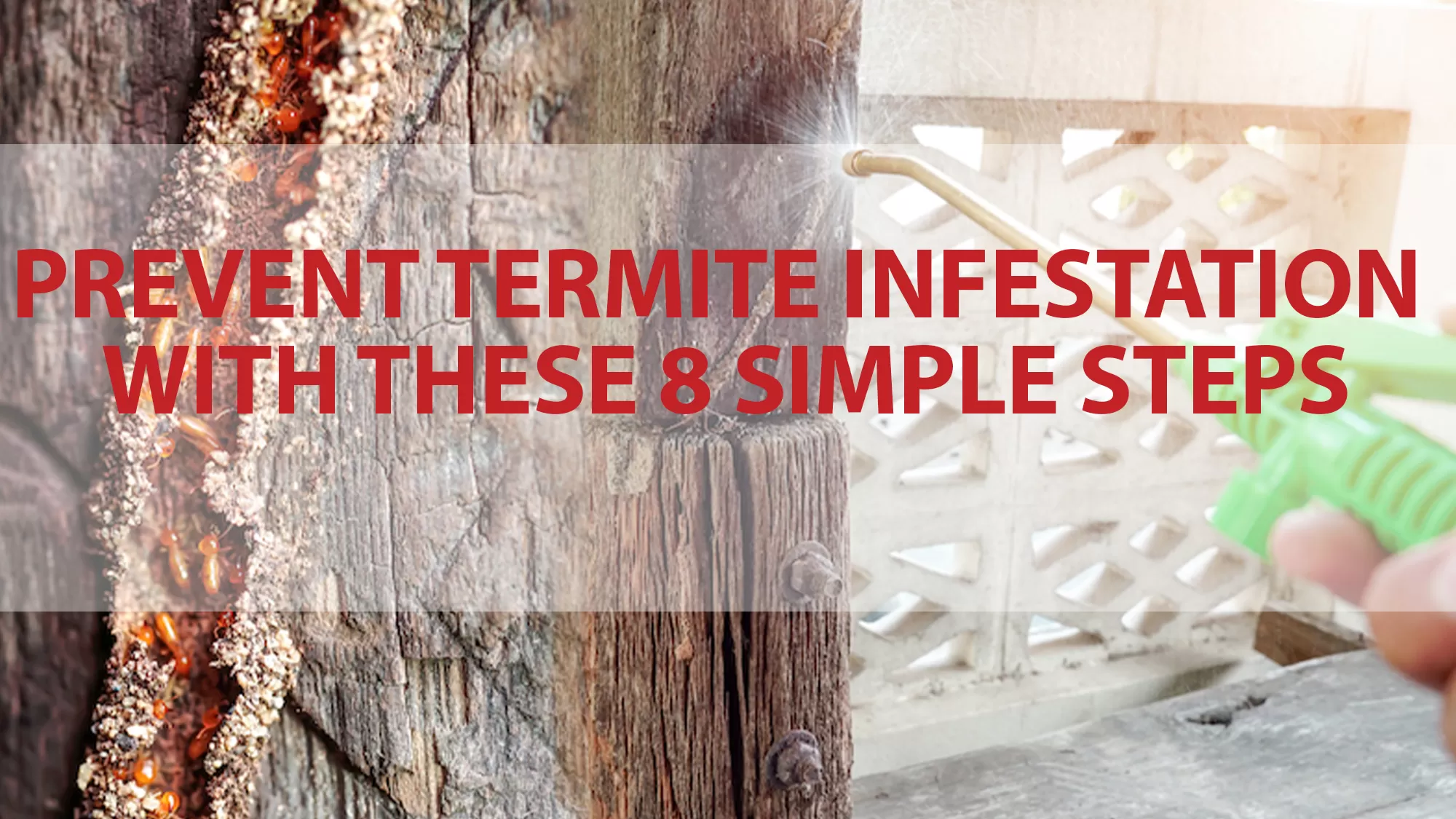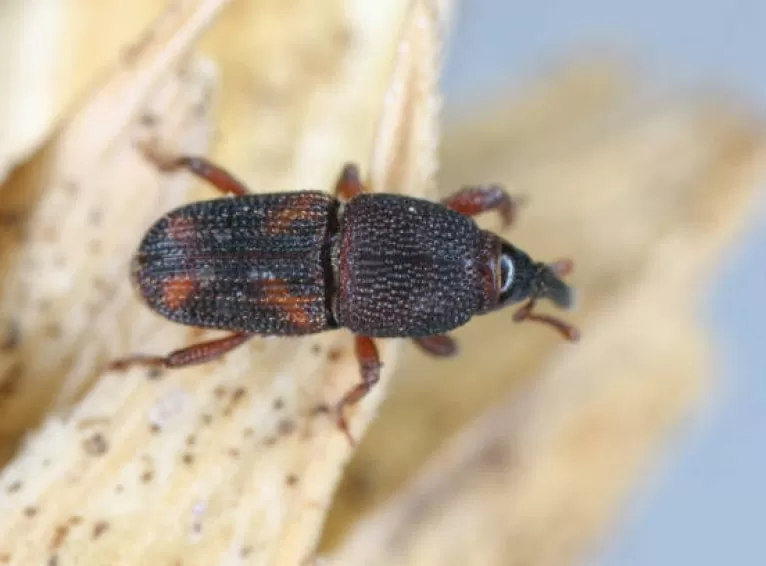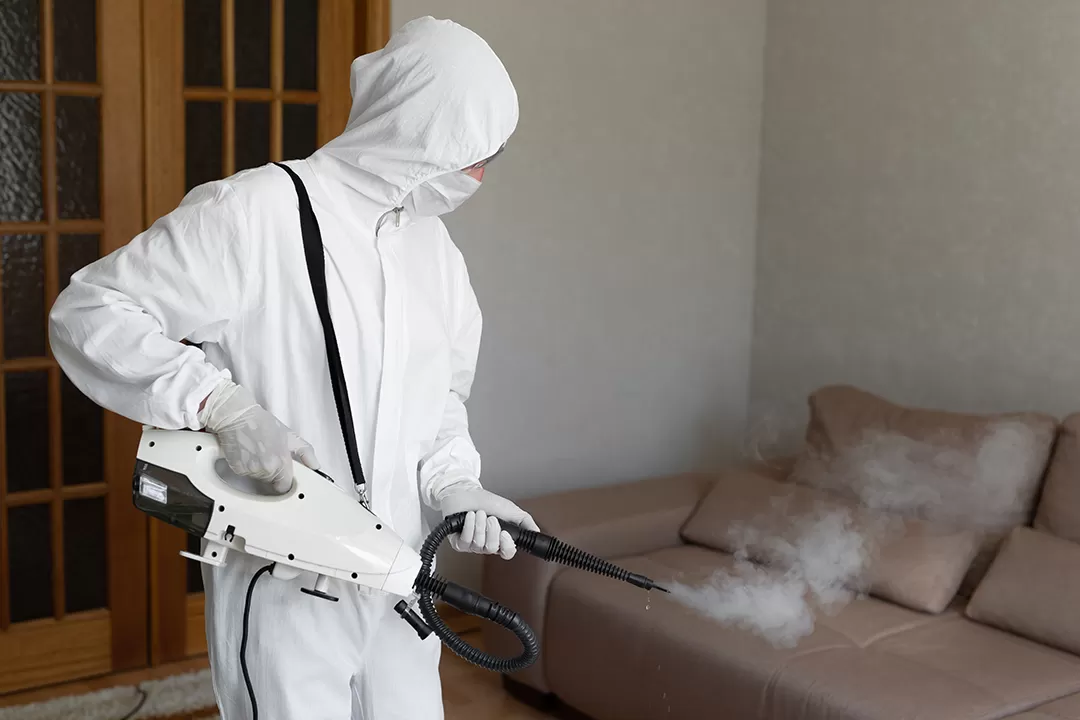Are you constantly paranoid about a termite invasion? Well, you should be! Termites are notorious for eating up your house and your belongings from within. Even before you know it, everything will be collapsing around you.
Considering how expensive repairs related to termite damage can get, it is good to be wary. Take all the right measures to prevent termite infestation by embracing the preventative approach – don’t worry; it is easier than you think.
In this article, we have outlined some simple steps you can follow to keep your home free of termites. Not only will these tips help keep termites away, but they will also prevent any existing termite population from spreading too widely.
Simple Steps to Prevent Termite Infestation
Eliminate Sources of Moisture
Moisture attracts all kinds of pests – and termites are no exception. If you want to keep termites at bay, the first step is to get rid of excess moisture. Therefore, it is important to free your house from moisture.
Invest in a dehumidifier if your house is in a humid area. Maintain a cool internal temperature inside the house, even in the summer, by periodically turning the air conditioner on throughout the day. In addition to moderating the temperature, this will eliminate extra moisture from the air in your home.
Take note that air conditioning units can produce moisture too. Once the AC is turned off, do not forget to aerate the rooms. Airing the area is more important if you turn on the air conditioner often. After you turn the air conditioner off, check the walls for any moisture caused by water condensation. Wipe this moisture immediately to prevent termites and other pests such as booklice.
Take Care of Water Leaks
Many termite species can thrive in areas with a lot of moisture. However, they do not need a lot of water to survive. A few drops of water are generally sufficient for an entire colony of termites.
Check the drainage system in your home thoroughly. There shouldn’t be any broken or leaking pipes. Inspect all the water sources in the basement, roof space, and laundry room. These areas in your house are the first to attract termites as they offer a suitable environment for them to thrive. Fix any leakage as soon as you can.
What’s more, try to identify decays. Moisture-laden walls and decayed roofs can serve as inviting hosts to termites. Perform frequent inspections in dingy corners and the basement of your property. Leakages in the basement are especially horrifying. As it is closer to the ground, termites find it easier to attack here.
Declutter Your Belongings
Whether it be bed bugs, cockroaches, or termites, decluttering is a common prevention tactic for most pests. Pesky insect populations can easily find comfortable hiding spots when your house is too congested. In addition to loads of dark and cosy hiding spots offered by a cluttered home, pests also love such a home because it’s often also dirty.
You will be surprised what a significant impact decluttering can have on controlling pests in your house. For example, to prevent termites, throw out useless papers, newspapers, magazines, and cardboard which can help termites multiply if left around.
If you notice or suspect termite activities in one of your rooms, never try to move items in that room to unaffected areas of the house. If you need to keep any cardboard boxes and wood piles, store them in termite-free storage away from your home. Also, note that you should store firewood no less than 20 feet away from your property.
Termite-proof Your House
If you are constructing a new home, that would be the best time to take preventive actions against termites. Yes, you can termite-proof your home by minimising the use of wood. Instead, use a concrete foundation so you never have to worry about termites eating your home from within. If you must use wood, apply a sealant on the wood surfaces that are exposed. This will help prevent future infestation.
How can you termite-proof the interior of your house? Well, the best way to prevent termites from dwelling in your home is to avoid buying wooden furniture. It is not a good idea to use wooden materials. Purchasing furniture that is not made of wood will deprive termites of food and shelter.
Try to Keep a Distance Between Wood and Soil
Make sure that the soil in your garden is kept at a safe distance from wooden items. An eighteen-inch space between the soil and wooden articles is recommended. By keeping this distance, you can discourage termites from attacking your home’s furniture and foundation.
Wondering how you can separate the wooden areas in your garden and patios from the soil? You can create physical barriers by using cement or stones to keep wood away from the soil.
Use Borate Before Priming and Painting Wood
Borate is an excellent termite repellent. Spray it on wood before your prime and paint it. Borat will seep into the wood and prevent termites from nibbling on it. After the borate dries, you can prime the wood and paint it as usual before using it to make doors, furniture, and window frames.
Even though this may seem like a lot of work, this termite repellant is both effective and long-lasting. The effects of this strong borate spray will help prevent termites for decades.
Sunbathe Infected Items
Termites cannot stand the heat. If you find that termites are affecting a piece of furniture, put it out in the sun for three days or more. This works exceptionally well in the summer as the heat kills termites. Sunbathing also reduces moisture in the item and prevents chances of a termite reinfestation.
For the best protection, you can dust the furniture well and apply a termite spray before bringing it inside the house again. Note that this technique works well not only with already infected furniture but also helps keep unaffected furniture termite-free.
Inspect Your Home Regularly for Signs of Termite Infestation
Finally, you can prevent a termite infestation by identifying all the early signs of a termite problem. Conduct routine inspections to check for mud tubes that termites build to reach food sources.
You can also check to see if any wood around the house sounds hollow when tapped. Bubbling or uneven paint is also a symptom. You should also monitor the exterior of your home, including skirting boards, door frames, and windows.
Do not take any symptoms of a termite infestation lightly. In fact, schedule a professional inspection every year so you can rest assured that your house is completely free of termites. Also, take note that most homeowner insurance policies do not cover wood-boring insect damage.
Conclusion
Termites may look small and innocent, but these pests can make your life difficult. Thankfully, you can keep them away by simply doing a few things. First, limit access to moisture and water in the house. You can do this by trying dehumidifying techniques and prioritising fixing any water leakage.
Also, consider decluttering your space to limit hiding spots for termites. Removing unwanted cardboard, wooden items, etc., from your property will reduce their food sources. You can termite-proof wooden items using borate. In addition to all of these, you can carry out regular inspections to tackle termite populations long before they get a chance to grow. If you are not feeling too confident about this on your own, you can always rely on assistance from professional pest control experts.







